Showing Spotlights 1321 - 1328 of 2875 in category All (newest first):
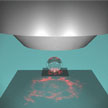 A conventional optical microscope equipped with an oil immersion objective can resolve objects no smaller than about 200 nanometers - a restriction known as the diffraction limit. The diffraction limit, which typically is half the width of the wavelength of light being used to view the specimen, represents the fundamental limit of optical imaging resolution. Breaking this limit is possible by very sophisticated techniques and costly instrumentation. Now, though, researchers in Switzerland have found that when putting a transparent dielectric particle on top of an object with nanoscale features, details of that object with a size as small as one fourth of the diffraction limit can be resolved using a conventional microscope objective.
A conventional optical microscope equipped with an oil immersion objective can resolve objects no smaller than about 200 nanometers - a restriction known as the diffraction limit. The diffraction limit, which typically is half the width of the wavelength of light being used to view the specimen, represents the fundamental limit of optical imaging resolution. Breaking this limit is possible by very sophisticated techniques and costly instrumentation. Now, though, researchers in Switzerland have found that when putting a transparent dielectric particle on top of an object with nanoscale features, details of that object with a size as small as one fourth of the diffraction limit can be resolved using a conventional microscope objective.
Jan 7th, 2014
 In the area of development cooperation which, like disaster relief, is often confronted with demands and scenarios that are hard to predict, nanotechnology based solutions can offer interesting perspectives for medical care, water treatment, agriculture and food, as well as rural infrastructure development in developing countries. A publication aims to inform managers and staff working in emergency response services and development cooperation as well as related institutions about the innovation potential of nanotechnology for their respective fields of work, and to highlight areas of overlap. The 84-page brochure also addresses companies and industry representatives that are already operating in this area or are interested in tapping in to this market.
In the area of development cooperation which, like disaster relief, is often confronted with demands and scenarios that are hard to predict, nanotechnology based solutions can offer interesting perspectives for medical care, water treatment, agriculture and food, as well as rural infrastructure development in developing countries. A publication aims to inform managers and staff working in emergency response services and development cooperation as well as related institutions about the innovation potential of nanotechnology for their respective fields of work, and to highlight areas of overlap. The 84-page brochure also addresses companies and industry representatives that are already operating in this area or are interested in tapping in to this market.
Jan 6th, 2014
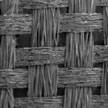 Here are the 10 most popular Nanowerk Nanotechnology Spotlight articles of 2013. This year, the list includes nanotechnology in sports equipment, nanogenerators for energy harvesting, electronic skin, stealth coatings, green battery components, wearable textile batteries, two-dimensional materials beyond graphene, medical microrobots for drug delivery, chips inside cells to feel the pressure, and a list of graphene manufcaturers.
Here are the 10 most popular Nanowerk Nanotechnology Spotlight articles of 2013. This year, the list includes nanotechnology in sports equipment, nanogenerators for energy harvesting, electronic skin, stealth coatings, green battery components, wearable textile batteries, two-dimensional materials beyond graphene, medical microrobots for drug delivery, chips inside cells to feel the pressure, and a list of graphene manufcaturers.
Jan 3rd, 2014
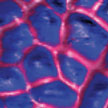 Measuring and mapping mechanical properties of live cells is of high importance in today's biological research. raditionally, force spectroscopy and force volume are the most commonly used modes to quantitatively measure mechanical forces at the nanometer scale. Unfortunately, both techniques have suffered from slow acquisition speed and a lack of automated tools to analyze the hundreds to thousands of curves required for good statistics. This application note reviews recent progress in mapping the properties of soft samples such as cells and gels with force volume and PeakForce QNM and the use of the newest NanoScope and NanoScope Analysis features to collect and analyze the data from these techniques.
Measuring and mapping mechanical properties of live cells is of high importance in today's biological research. raditionally, force spectroscopy and force volume are the most commonly used modes to quantitatively measure mechanical forces at the nanometer scale. Unfortunately, both techniques have suffered from slow acquisition speed and a lack of automated tools to analyze the hundreds to thousands of curves required for good statistics. This application note reviews recent progress in mapping the properties of soft samples such as cells and gels with force volume and PeakForce QNM and the use of the newest NanoScope and NanoScope Analysis features to collect and analyze the data from these techniques.
Dec 30th, 2013
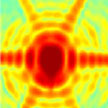 Following extensive research in the field of bionano-interfaces, it is now well understood that the primary interaction of biological species with nanoparticles is strongly dependent to the long-lived protein corona, i.e. a strongly adsorbed protein layer at the surface of nanoparticles. The amount, composition, and exposure site of the associated proteins in the long-lived protein corona can define the biological response to the nanoparticles and hence reveal their biological fate. Scientists have now shown that laser plasmonic heat induction leads to significant changes in the protein corona composition at the surface of gold nanorods.
Following extensive research in the field of bionano-interfaces, it is now well understood that the primary interaction of biological species with nanoparticles is strongly dependent to the long-lived protein corona, i.e. a strongly adsorbed protein layer at the surface of nanoparticles. The amount, composition, and exposure site of the associated proteins in the long-lived protein corona can define the biological response to the nanoparticles and hence reveal their biological fate. Scientists have now shown that laser plasmonic heat induction leads to significant changes in the protein corona composition at the surface of gold nanorods.
Dec 18th, 2013
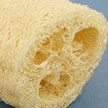 In microbial fuell cells, the anode material as the medium of electron transfer and as the support for biofilm formation is a key component that determines the effectiveness and efficiency of power generation. Generally, the anode will perform better if the anode material has a greater specific surface area and higher affinity for living bacterial cells. The direct carbonization of low-cost and naturally available materials provides a potential alternative to commercial anodes with high specific surface area. In new work, scientists demonstrate a new procedure to generate novel macroporous carbon prepared from a fibrous loofah sponge.
In microbial fuell cells, the anode material as the medium of electron transfer and as the support for biofilm formation is a key component that determines the effectiveness and efficiency of power generation. Generally, the anode will perform better if the anode material has a greater specific surface area and higher affinity for living bacterial cells. The direct carbonization of low-cost and naturally available materials provides a potential alternative to commercial anodes with high specific surface area. In new work, scientists demonstrate a new procedure to generate novel macroporous carbon prepared from a fibrous loofah sponge.
Dec 17th, 2013
 Researchers demonstrate a strategy for the fabrication of memristive nanodevices with stable and tunable performance by assembling ferritin monolayer inside a on-wire lithography-generated 12 nm gap. This work work uses the unique high iron loading capacity of Archaeoglobus fulgidus ferritin. The iron loading in the nanocages drastically impacts the performance of the memristive devices. The higher iron loading amount contributes to better memristive performance due to higher electrochemical activity of the ferric complex core.
Researchers demonstrate a strategy for the fabrication of memristive nanodevices with stable and tunable performance by assembling ferritin monolayer inside a on-wire lithography-generated 12 nm gap. This work work uses the unique high iron loading capacity of Archaeoglobus fulgidus ferritin. The iron loading in the nanocages drastically impacts the performance of the memristive devices. The higher iron loading amount contributes to better memristive performance due to higher electrochemical activity of the ferric complex core.
Dec 16th, 2013
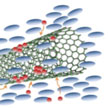 Their unique combinations of liquid and solid-like properties allow liquid crystals to be used pervasively in the electro-optical display technology - known as liquid crystal display (LCD). In new work, researchers have observed that a dilute suspension of a small amount of multi-walled carbon nanotubes in a nematic liquid crystal (in the nematic LC phase the molecules are oriented in parallel but not arranged in well-defined planes) results in a significantly faster nematic switching effect on application of an electric field.
Their unique combinations of liquid and solid-like properties allow liquid crystals to be used pervasively in the electro-optical display technology - known as liquid crystal display (LCD). In new work, researchers have observed that a dilute suspension of a small amount of multi-walled carbon nanotubes in a nematic liquid crystal (in the nematic LC phase the molecules are oriented in parallel but not arranged in well-defined planes) results in a significantly faster nematic switching effect on application of an electric field.
Dec 13th, 2013
 A conventional optical microscope equipped with an oil immersion objective can resolve objects no smaller than about 200 nanometers - a restriction known as the diffraction limit. The diffraction limit, which typically is half the width of the wavelength of light being used to view the specimen, represents the fundamental limit of optical imaging resolution. Breaking this limit is possible by very sophisticated techniques and costly instrumentation. Now, though, researchers in Switzerland have found that when putting a transparent dielectric particle on top of an object with nanoscale features, details of that object with a size as small as one fourth of the diffraction limit can be resolved using a conventional microscope objective.
A conventional optical microscope equipped with an oil immersion objective can resolve objects no smaller than about 200 nanometers - a restriction known as the diffraction limit. The diffraction limit, which typically is half the width of the wavelength of light being used to view the specimen, represents the fundamental limit of optical imaging resolution. Breaking this limit is possible by very sophisticated techniques and costly instrumentation. Now, though, researchers in Switzerland have found that when putting a transparent dielectric particle on top of an object with nanoscale features, details of that object with a size as small as one fourth of the diffraction limit can be resolved using a conventional microscope objective.
 Subscribe to our Nanotechnology Spotlight feed
Subscribe to our Nanotechnology Spotlight feed





